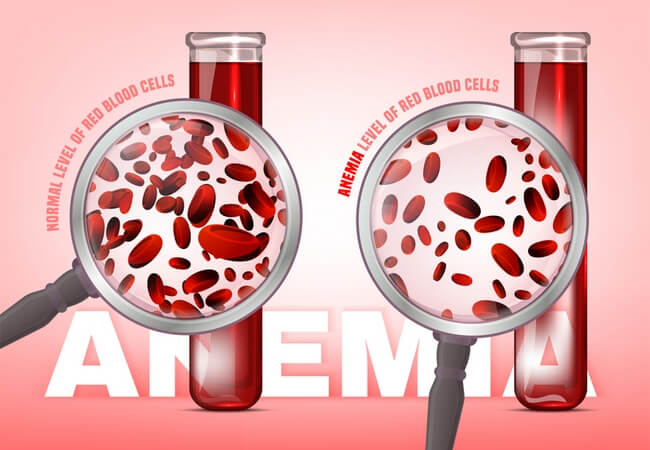Morphological and Etiological Classifications of Anaemia or Anemia
Concept about Anaemia or Anemia:
Anemia is when the level of healthy red blood cells (RBCS) in the body becomes too low. This can lead to health problems because RBCs contain hemoglobin, which carries oxygen to the body’s tissues. Anemia can cause a variety of complications, including fatigue (tiredness) and stress on the body’s organs.
Having fewer red blood cells than normal can happen because:
- The body is destroying red blood cells.
- Red blood cells are being lost.
- The body is producing red blood cells too slowly.
Anemia is a fairly common blood disorder with many causes. It includes inherited disorders, nutritional problems (such as an iron or vitamin deficiency), infections, some kinds of cancer, and exposure to a or toxin.

Definition of Anaemia or Anemia:
Anemia is a clinical condition characterized by pale coloration of the skin and mucous membrane due to qualitative and quantitative deficiency of hemoglobin below the lower limit in the peripheral blood in respect of age and sex.
Anemia is decreased in the total amount of red blood cells (RBCs) or hemoglobin in the blood, or a lowered ability of the blood to carry oxygen.
Normal Hb Level:
- Male- 13-18 gm /dl,
- Female -11.5-1 6.5 gm / dl,
- Children -16- 19 gm/ dl,
- At birth- 18-20 gm/ dl.
Types or Classifications of Anaemia or Anemia:
1. Morphological classification:
a. Microcytic Hypochromic anaemia (MCV < 80 fl):
- Iron deficiency anemia,
- Thalassaemia (Haemolytic anaemia),
- Anaemia of chronic disease.
b. Macrocytic Anaemia (MCV > 96 fl):
- Megaloblastic anaemia.
c. Normocytic normochromic anaemia (MCV 80-96 fl):
- Anaemia of acute disease,
- Chronic kidney disease,
- Connective tissue disorder.
2. Aetiological classification:
a. Blood loss anaemia/Haemorrhagic anaemia:
- Acute haemorrhage: Trauma, surgical operation.
- Chronic haemorrhage: Bleeding peptic ulcer, hookworm infestation, haemorrhoids, ca stomach, chronic aspirin intake etc.
b. Haemolytic anaemia / increase RBC destruction:
- Defect in haemoglobin: Thalassaemia.
- Abnormal shape of RBC: Haemolytic disease of newborn.
c. Dyshaemopoietic anaemia:
Due to deficiency of essential elements of erythropoiesis:
- Iron deficiency anaemia.
- Megaloblastic anaemia (due to deficiency of vitamin B12 & folic acid).
- Nutritional anaemia in PEM (protein-energy malnutrition).
- Anaemia with scurvy (due to deficiency of vitamin C).
Due to bone marrow disturbance:
- Aplastic anaemia.
- Sideroblastic anaemia.
- Anaemia with renal failure (due to reduced erythropoietin secretion).
- Anaemia with endocrine disorders.
3. Clinical classification:
a. Mild anaemia: When Hb 9-12gm/dl. (+)
b. Moderate anaemia: When Hb 69 gm/dl. (++)
c. Severe anaemia: when Hb <6 gm/dl. (+++)
More questions related to this article:
- What is anemia?
- Define anaemia.
- What do you mean by anaemia?
- Write down the classification of anaemia.
- What are the classifications of anaemia?
- Write down the morphological classification anemia.
- Classify anaemia.
- What are the etiological classification of anemia?

Maria Khatun Mona is a Founder and Editor of Nursing Exercise Blog. She is a Nursing and Midwifery Expert. Currently she is working as a Registered Nurse at Evercare Hospital, Dhaka, Bangladesh. She has great passion in writing different articles on Nursing and Midwifery. Mail her at “maria.mona023@gmail.com”
